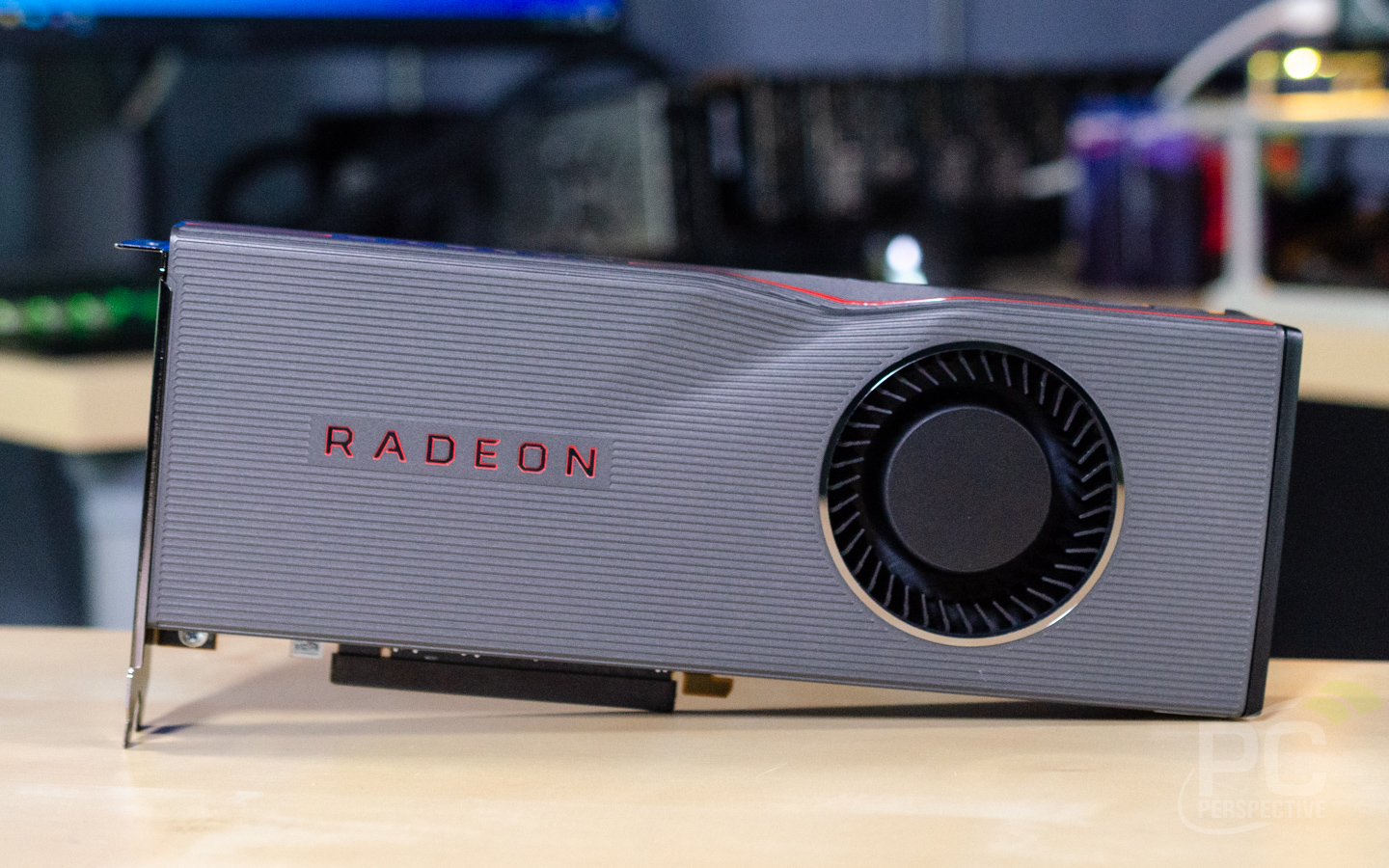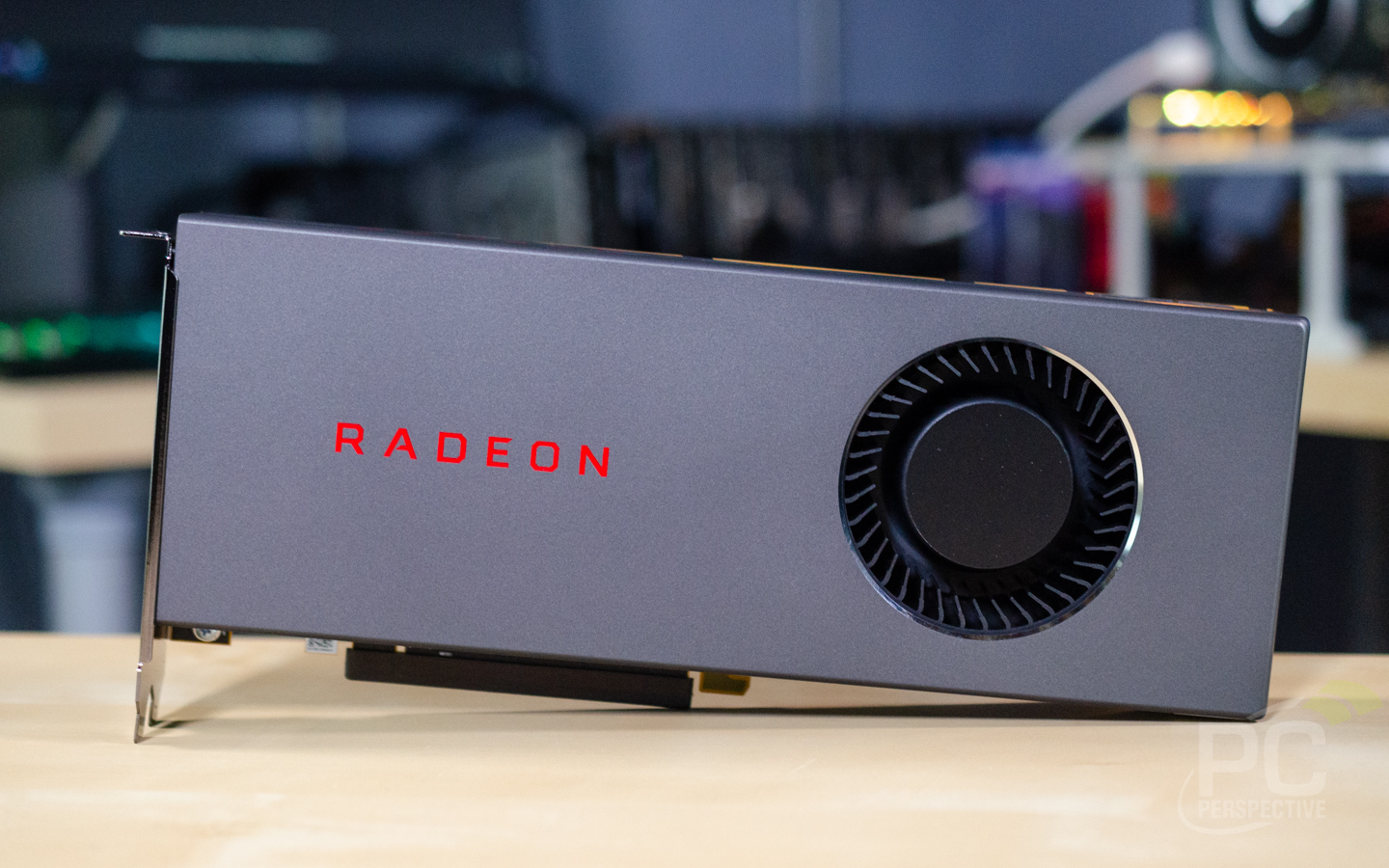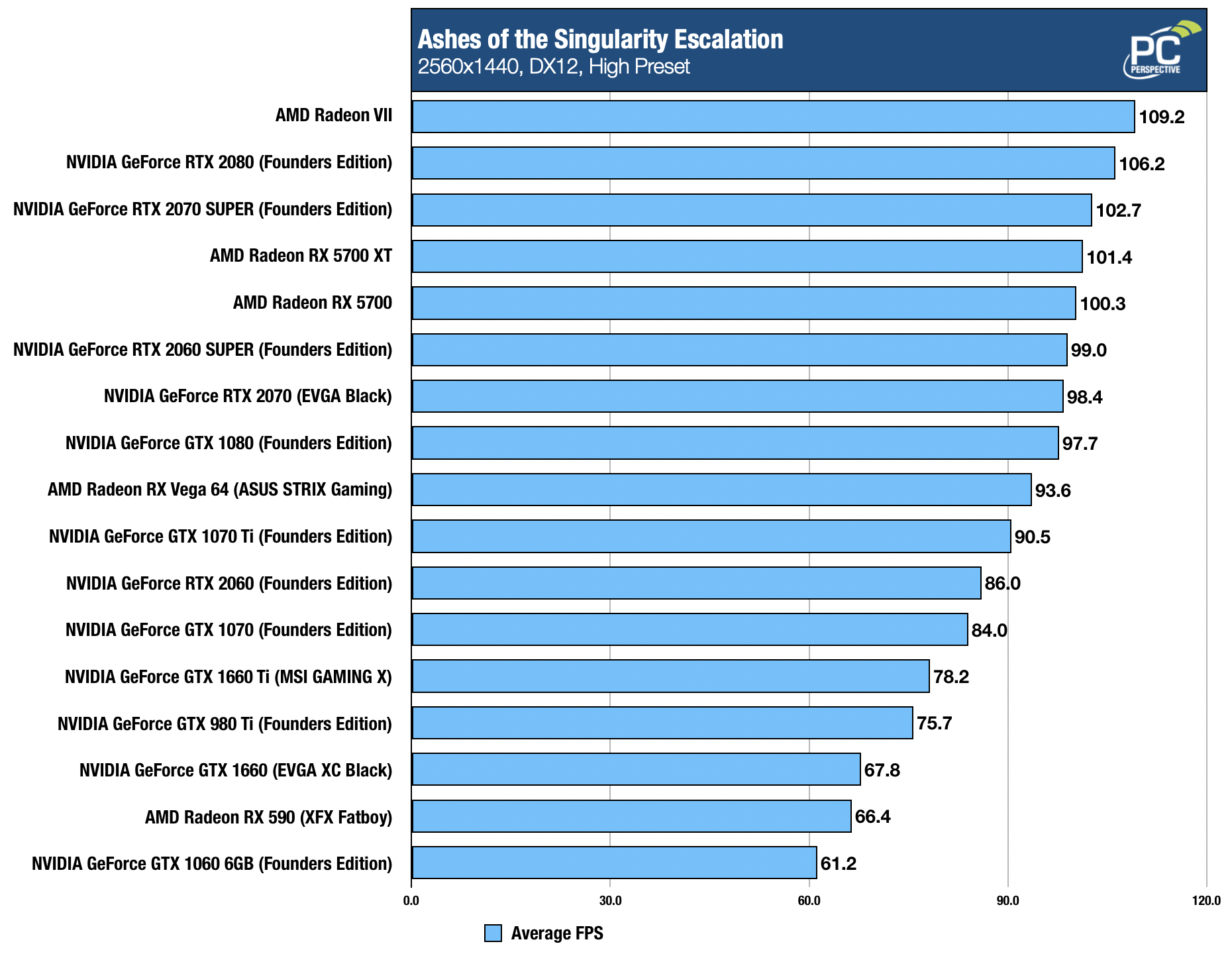AMD Radeon RX 5700 and RX 5700 XT Review: Competition Heats Up

The Navi Era Has Begun
AMD Radeon RX 5700 and RX 5700 XT Tested
The summer of 2019 has been one of rumors, leaks, dramatic product reveals, and price wars. And it’s only July 7. And what would 7/7 be without the launch of a 7nm GPU? How about three of them? AMD has officially released the new Radeon RX 5700, RX 5700 XT, and RX 5700 XT 50th Anniversary Edition today.
We received two of these cards to test (the Radeon RX 5700 and standard RX 5700 XT) and are now ready to show our initial finding with the first Navi GPUs. And no, the lineup of game presented here is not ideal, and we were running pre-release drivers so performance will improve in time, but such is life.
Note: While Josh dissects RDNA we must content ourselves with some early benchmarks. And you know what? Spoiler alert: Things are looking pretty good so far.
Specifications
The Radeon RX 5700 Series family consists of three graphics cards so far, with the RX 5700 and RX 5700 XT joined by a 50th Anniversary Edition of the RX 5700 XT that offers higher clock speeds and a different trim color.
Note: in the spec table below the RX 5700 Series Base, Game, and Boost clocks are officially listed as “up to” frequencies. As to the 50th Anniversary version of the RX 5700 XT, it provides a 1680 MHz Base, 1830 MHz Game, and up to 1980 MHz Boost frequency out of the box.
| RX 5700 XT | RX 5700 | RX Vega 64 | RX Vega 56 | |
|---|---|---|---|---|
| GPU | Navi 10 | Navi 10 | Vega 10 | Vega 10 |
| Compute Units | 40 | 36 | 64 | 56 |
| Stream Processors | 2560 | 2304 | 4096 | 3584 |
| Base Clock | 1605 MHz | 1465 MHz | 1274 MHz | 1156 MHz |
| Game Clock | 1755 MHz | 1625 MHz | – | – |
| Boost Clock | 1905 MHz | 1725 MHz | 1546 MHz | 1471 MHz |
| Texture Units | 160 | 144 | 256 | 224 |
| ROPs | 64 | 64 | 64 | 64 |
| Memory | 8GB GDDR6 | 8GB GDDR6 | 8GB HBM2 | 8GB HBM2 |
| Memory Data Rate | 14 Gbps | 14 Gbps | 1.89 Gbps | 1.6 Gbps |
| Memory Interface | 256-bit | 256-bit | 2048-bit | 2048-bit |
| Memory Bandwidth | 448 GB/s | 448 GB/s | 483.8 GB/s | 410 GB/s |
| Transistor Count | 10.3B | 10.3B | 12.5B | 12.5B |
| Die Size | 251 mm2 | 251 mm2 | 495 mm2 | 486 mm2 |
| Process Tech | 7 nm | 7 nm | 14 nm | 14 nm |
| Board Power | 225W | 185W | 295W | 210W |
| Launch Price | $399 | $349 | $499 | $399 |
Game Benchmarks: 2560×1440
The results to follow speak for themselves, so I won’t add too much commentary. Radeon RX 5700 XT and RX 5700 did very well in our initial testing, and the final $399/$349 pricing looks pretty good based on these results.
Ashes of the Singularity: Escalation
While an unreliable benchmark at times in my experience at lower resolutions (I’m looking at you, 1080p CPU performance game testing results), AotS is nonetheless a good GPU performance test at 1440p. Here it was run as with previous reviews at the “high” detail preset using the DX12 API. In fact, in all the games to follow the “high” preset was used, with the exception of World of Tanks which was set to “ultra” settings.
Far Cry 5
F1 2018
Middle Earth: Shadow of War
World of Tanks enCore
Power Consumption, Temps, and Noise
The move to 7nm with Navi has been well publicized (and I am publishing this on 7/7 just to drive the point home a little more), and with that should come some power savings even though clock speeds have moved up from prior Radeon cards.
Total power with the RX 5700 XT is about the same as what we saw with the RX 590 we’ve tested, placing this closer to NVIDIA’s RTX 2070 SUPER. The non-XT RX 5700 was a closer to the RTX 2060 SUPER, tied with the GTX 1070 Ti.
Clearly getting the highest performance possible out of these Navi GPUs was a higher priority than power savings, just as we saw with the 7nm Radeon VII. We are still looking at far lower power than a Vega 64, and higher performance to boot. Things are moving in the right direction.
Temperatures and Noise
While temps and noise will vary based on load (and eventual aftermarket cooler designs), what we observed with these reference designs was about what one might expect from a blower-style cooler. Temps are fine, with 76 C (hot spot/tJunction at 94 C) from the RX 5700 XT and 66 C (hot spot/tJunction at 77 C) with the RX 5700, both in a ~25 C room.
As to noise levels, these are indeed controlled, with 31 – 31.6 dBA at idle and a max of 48.5 – 48.6 dBA from both cards on the open test bench. Manually tuning the fan profile will provide lower temps, but these will start to get loud quickly. AMD has struck a pretty good balance between temps and noise with these cards, and the sound did not carry a “whine” and was easier to ignore as a result.
Final Thoughts (the story is just beginning…)
These benchmarks skewed towards DX11 and only covered one resolution, but just from these initial findings I have come away very impressed with the performance of Navi. The RX 5700 XT is faster overall in these tests vs. the RTX 2060 SUPER at the same $399 price point.
Granted, hardware ray tracing support is something AMD can’t match right now so if that matters to you NVIDIA is the only game in town, and the RTX 2060 SUPER would make more sense in that scenario.
We haven’t even scratched the surface with these new cards, as testing needs to be done with more and newer games, Vulkan API, and we had been waiting on new drivers to start overclocking as well. Add X570 to the mix and July will be a very busy month.





























So, I was randomly asked a question by a friend while we were chatting the various pro about AMD and Nvidia’s new cards, and I had no honest idea of the answer, so I thought I’d pop it here.
Does hardware ray tracing enhance VR gameplay, as in will it create a smoother experience that is easier on the eyes/mind to create a more immersive play, or is it best to spend every penny available to increase frame rate with a faster non RTX card.
I suspect I’m gonna be asked this question a few times in the next few years, I wonder if there is a solid answer. Thoughts?
From the standpoint of visual immersion, yeah, but that part about easier on the eyes and mind to me is a twofold problem. First, frame rate, RTX card or not. If that is high enough then the second part is control, and rapid head movements are not the answer. The eye-tracking stuff I tested at CES two years ago made all the difference to me, and as susceptible to motion sickness as I am I was fine after 45 minutes with the thing. Made all the difference to be able to have my head follow my eyes with a more natural motion.
It’s interesting how these supposed midrange cards are benched at 1440p to give meaningful numbers – and even then a lot of games are in the 100fps plus bracket.
Seems like developers need to make use of the extra horse power and increase graphical fidelity. Maybe the release of new consoles will push them in that direction?
It’s to the point where 1080p results can place the cards in an order on the charts that is misleading based on their actual potential, but as you say even 2560×1440 puts them in the triple digits. The answer? Maybe either 2160 medium/high settings or 1440 ultra?
We need another Crysis.
Something that isn’t well documented yet is the H265 HEVC encoding performance of the 5600xt. I’ve seen it talked about sort of briefly from level 1 techs. but would love to see some actual numbers. and since you guys also run a Tr4 1950x plex server. I’d love to see this spank my 1080ti and give me a compelling reason to upgrade.
This is a comprehensive look and it’s not pretty. AMD will, I assume, address this with a driver update.
https://www.youtube.com/watch?v=CLqpVImLPGE&feature=youtu.be
I was rather excited to upgrade my old GTX 770 with a 5700… the only thing I am little concerned about is reading that the PS5 and Xbox2 will have some kind of raytracing. If the console hardware “floor” will be raised to include raytracing , I am concerned that RX5700 will not hold on to its value in the long term. I will probably pick up a 5700 in 6months when it works better on Linux and there are better cooling solutions being offered.
“Competition Heats Up” lol I read that as Sebastian giving some shade at the less than idea Blowers on these cards making them stay warmer than other solutions.
Someone got it!